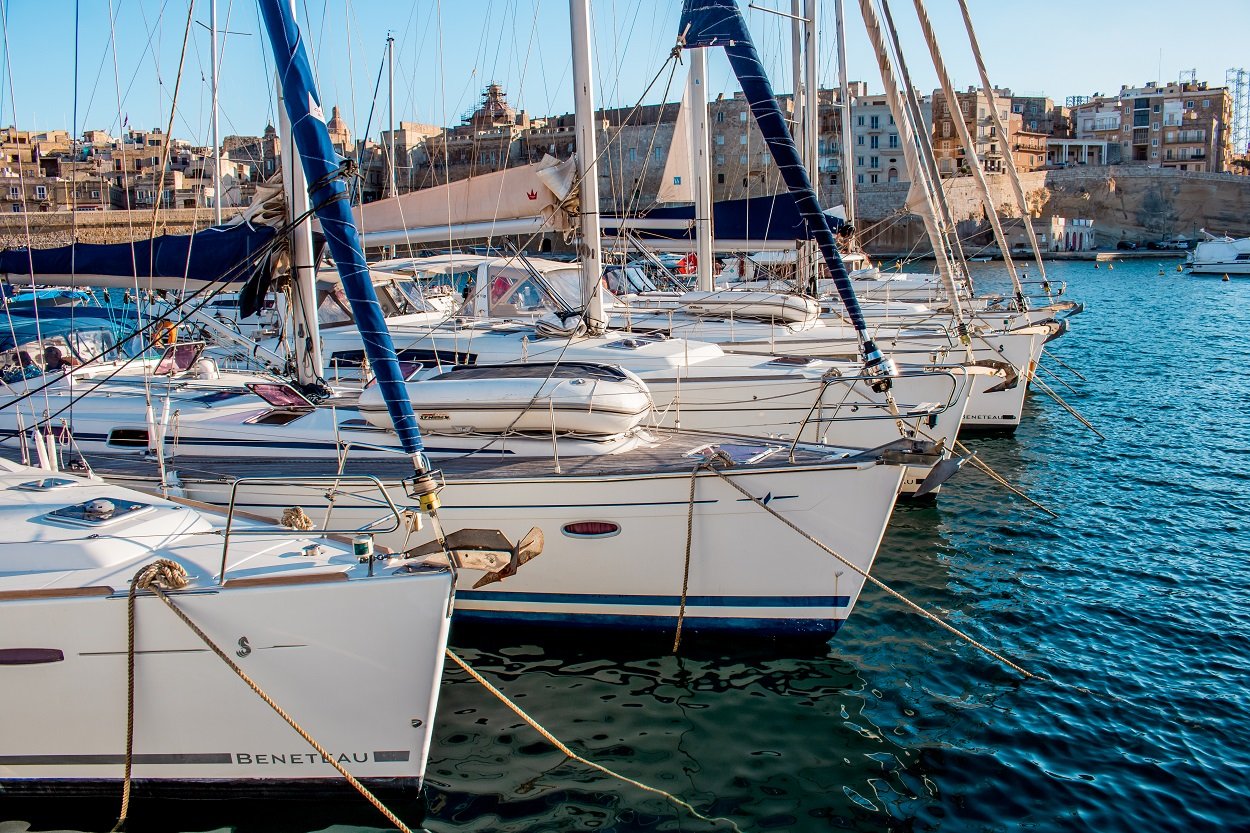Introduction to Whale Sharks
Whale sharks, scientifically known as Rhincodon typus, are the largest extant fish species, with adults regularly measuring up to 40 feet in length, and some individuals even reaching lengths of over 60 feet. Despite their colossal size, these gentle giants are filter feeders, mainly subsisting on plankton, tiny fish, and various forms of marine life. This diet enables them to thrive in diverse aquatic environments, particularly in tropical and subtropical waters, where food sources are abundant.
Whale sharks are characterized by their distinctive patterns of light-colored spots and bars against a dark gray or blue body. Each whale shark exhibits unique markings, much like human fingerprints, which researchers utilize for identifying and tracking individuals. These markings serve an additional purpose, possibly aiding in communication or territorial identification among species. Their wide mouths, which can measure up to five feet across, allow them to filter feed—taking in large quantities of water to extract food, which they then pass through their gills.
Behaviorally, whale sharks are known to be solitary creatures; however, they can occasionally be observed socializing in small groups, especially in areas with abundant food supply. They are primarily migratory, often traveling long distances in search of food. Notably, locations such as the Philippines provide crucial habitat for these magnificent creatures. The waters around the Philippines offer an array of feeding opportunities, attracting whale sharks to congregate near certain coastal areas.
Conservation status is a significant concern for whale sharks, as they face threats from fishing, habitat loss, and accidental capture in fishing gear. While they are protected in many regions, including the Philippines, continued efforts are necessary to ensure their survival. The opportunity to encounter whale sharks while scuba diving not only showcases their majestic presence but also highlights the importance of marine conservation efforts aimed at protecting this spectacular species.
Best Locations for Whale Shark Encounters
The Philippines offers several prime destinations for divers eager to experience the majestic presence of whale sharks. Three locations stand out for their unique features, accessibility, and opportunity for memorable encounters: Oslob, Donsol, and Leyte.
Oslob, located on the southern tip of Cebu, is perhaps the most famous spot for whale shark watching. Daily interactions with these gentle giants can be experienced almost year-round, though the peak season typically runs from November to June. It is crucial for divers to follow ethical guidelines during encounters to promote conservation efforts. In Oslob, divers can expect clear waters with excellent visibility, which enhances the experience of swimming alongside these enormous, yet docile, creatures.
Donsol, situated in the province of Sorsogon, is renowned for its responsible whale shark tourism practices. Whale sharks can be spotted in Donsol from November to May, with peak sightings from February to April. Unlike Oslob, where encounters are regulated by local operators, Donsol offers a unique “whale shark interaction” program, allowing divers to snorkel or dive freely to observe them in their natural habitat. This immersive experience provides divers with a deeper understanding of the species and its ecological importance.
Lastly, Leyte is emerging as an excellent destination for encountering whale sharks, particularly in Pintuyan and Southern Leyte. This destination offers a less commercialized experience, appealing to divers seeking a tranquil atmosphere. The best months for whale shark sightings are from June to September. In Leyte, divers can expect beautiful coral reefs and clear waters, contributing to a well-rounded scuba diving experience.
Overall, these locations in the Philippines provide distinct opportunities for whale shark encounters, each with its unique advantages that cater to diverse preferences among diving enthusiasts.
Planning Your Trip: When to Go and What to Prepare
When considering a diving expedition to witness the magnificent whale sharks in the Philippines, timing is crucial. The best season for scuba diving with these gentle giants generally spans from November to June. During this period, the waters are optimal for visibility, and the chances of encountering whale sharks increase significantly. However, the peak months tend to be February to April, aligning with the migration patterns of these marine creatures. It is advisable to check local diving conditions and whale shark activity reports before finalizing travel dates.
Weather considerations play an essential role in ensuring a successful diving experience. The dry season, characterized by sunny skies and calm seas, is preferred for diving excursions. On the other hand, the wet season from June to October may lead to unpredictable weather and rougher seas, which can impact diving safety and visibility. Therefore, monitoring local forecasts is recommended to select the ideal time for your trip.
Preparation is not solely about selecting the right time to dive; having the necessary travel documents is equally essential. Visitors to the Philippines should ensure that they possess a valid passport, potentially a visa depending on the country of origin, and relevant certifications for scuba diving. It is wise to familiarize yourself with local regulations regarding marine conservation to ensure compliance. Moreover, travelers should consider travel insurance that covers scuba diving activities.
Physical and mental preparation for the diving experience is paramount. Engaging in regular swimming or fitness activities can enhance overall stamina and comfort in the water. Additionally, mental preparedness involves familiarizing oneself with the diving equipment and practices. Joining an orientation session or participating in a guided dive can provide invaluable experience and reassurance prior to the encounter with these magnificent creatures.
Selecting a Dive Operator
Choosing the right dive operator for an unforgettable whale shark experience in the Philippines is crucial for both safety and ethical interactions with these magnificent creatures. It is essential to start by ensuring that the dive operator holds appropriate certifications from recognized bodies such as the Professional Association of Diving Instructors (PADI) or the Scuba Schools International (SSI). These certifications signify that the operator adheres to specific safety and operational standards. Inspecting the company’s credentials will provide a solid foundation for your decision-making process.
Moreover, reviews and recommendations from previous clients can offer valuable insights into the operator’s level of service and commitment to safety. Platforms such as TripAdvisor and diving forums are excellent resources where divers share their experiences. Look for operators with consistently positive feedback, particularly regarding their safety protocols and guides’ expertise. Operators with a high frequency of positive reviews demonstrate reliability and a dedication to providing safe, enjoyable diving experiences.
Safety measures are of paramount importance when engaging in activities involving large marine animals. Aspects such as the operator’s emergency response plans, equipment maintenance, and adherence to regulations related to whale shark interaction should be thoroughly assessed. It is advisable to inquire about the operator’s safety briefings and whether they provide adequate training before the dive. Additionally, ethical practices should guide how the dive operator interacts with whale sharks. Choose operators who prioritize conservation, do not promote harassment of the animals, and follow guidelines established by local authorities and marine conservation organizations.
In making an informed choice regarding your diving experience, evaluating both the expertise and ethical standards of the dive operator will contribute not only to your safety but also to the preservation of whale sharks and their habitat. Therefore, take the time to select a dive operator that aligns with these essential criteria for a memorable and responsible encounter with these gentle giants.
Scuba Diving Equipment You Need
When preparing for an unforgettable experience like scuba diving with whale sharks in the Philippines, having the right equipment is crucial. Whether you are a novice diver or an experienced one, understanding the essential gear will enhance your adventure and ensure your safety underwater.
One fundamental piece of equipment is the wetsuit. Depending on the water temperature, a wetsuit provides thermal protection and buoyancy. Thicker suits are advisable in cooler waters, while thinner options work well in warmer climates. Consider renting a wetsuit if you dive infrequently; however, purchasing your own can provide a tailored fit that enhances comfort and performance.
Fins are another essential item that improves propulsion and maneuverability underwater. The choice of fins can vary; open-heel fins are typically paired with booties, providing versatility, while full-foot fins are ideal for warm-water dives. Renting is a practical option for those who dive occasionally, while regular divers might benefit from investing in a personal pair.
A well-fitting mask is vital for clear vision underwater. Look for a silicone skirt that seals well against your face to avoid leaks. Masks come in various styles and colors, catering to individual preferences. Beginners may also consider a mask with a built-in snorkel for convenience. Like other gear, renting masks is available, but having personal equipment can significantly improve comfort.
In addition to these essentials, having a reliable buoyancy control device (BCD) is crucial for maintaining optimal buoyancy during dives. A BCD allows divers to manage their flotation levels effectively. While rental options are available, owning a BCD can enhance your diving experiences by ensuring a proper fit and familiarity with your equipment.
In summary, an enjoyable scuba diving trip requires adequate preparation and the right equipment. Whether you choose to rent or purchase gear depends on your diving frequency and personal preference. Investing in high-quality scuba diving equipment fosters a safer and more pleasurable experience while exploring the magnificent underwater world alongside whale sharks.
Safety Considerations While Diving with Whale Sharks
Diving with whale sharks can be an exhilarating experience, but it is imperative to prioritize safety while engaging in this activity. First and foremost, divers should always adhere to the guidelines established by local authorities and tour operators. These regulations are designed to protect both the divers and the majestic whale sharks that inhabit Philippine waters.
One key aspect of safety while scuba diving with whale sharks is understanding how to interact respectfully with these gentle giants. Divers should maintain a safe distance, typically around three meters, to avoid causing stress or distress to the whale sharks. Approaching them from the side rather than head-on is advisable, as this is less intimidating for the animals. Furthermore, divers must refrain from touching or riding these creatures; such actions can lead to injury for both parties and could violate local marine conservation laws.
Recognizing signs of stress in whale sharks is essential for maintaining a safe environment. If the whale sharks exhibit erratic swimming behavior, such as rapid changes in speed or direction, it may indicate that they are feeling threatened. Divers should observe these signs and respond by gradually increasing their distance. The well-being of these animals should always take precedence over the desire to capture the perfect photograph or video.
Additionally, divers should remain vigilant about potential risks underwater. This includes being cautious of currents and other marine life. It is crucial to practice good buoyancy control and to ensure that all equipment is in proper working order before the dive. Diving with a buddy or as part of a guided group can enhance safety and promote effective communication—an essential component when encountering such large and powerful animals.
By prioritizing safety and respecting the whale sharks’ natural behavior, divers can enjoy a once-in-a-lifetime experience while contributing to the conservation of these remarkable creatures.
Photography Tips for Capturing Whale Sharks
Capturing compelling underwater photographs of whale sharks requires an understanding of various techniques and equipment settings. To begin with, selecting the right gear is essential. A camera with manual settings and the ability to attach an underwater housing is ideal for this activity, as it allows greater control over exposure and focus in changing underwater light conditions.
When setting your camera, consider using a higher ISO setting. This adjustment is particularly beneficial in deeper waters where light diminishes rapidly. A range of 400-800 ISO is generally sufficient, but adjustments may be necessary depending on your environment. Shooting in RAW format is also recommended, as it offers greater flexibility in post-processing, allowing you to adjust colors and exposure without significant loss in quality.
Composition plays a pivotal role in creating visually striking photographs. When photographing whale sharks, aim to capture their majestic size in relation to their surroundings, which can provide context and scale. Utilize the rule of thirds for balanced composition; placing the whale shark off-center often results in a more dynamic image. Experimenting with different angles, such as shooting from below or above, can yield fascinating results and highlight the unique patterns on the whale shark’s skin.
Ethical considerations in wildlife photography should never be overlooked. Approaching whale sharks cautiously is vital to minimize any disturbance. Maintain a respectful distance and avoid touching or chasing the animals, as this can stress them and affect their natural behavior. Utilizing a zoom lens will help you capture stunning imagery without intruding on their space. By adhering to ethical practices, you not only preserve the well-being of these gentle giants but also contribute to a more sustainable diving ecosystem.
Conservation and Responsible Diving Practices
The conservation of whale sharks in the Philippines is of paramount importance in ensuring the survival of this gentle giant. As the largest fish in the ocean, whale sharks serve a critical role in the marine ecosystem, contributing to biodiversity and ecosystem health. However, their populations are under threat from various factors, including overfishing, habitat degradation, and irresponsible tourism practices. As divers, it is our responsibility to protect these magnificent creatures through sustainable practices and awareness.
Responsible diving practices are essential for minimizing human impact on whale sharks and their habitats. Divers should prioritize organized tours that adhere to local regulations and conservation guidelines. Many regions in the Philippines, such as Oslob, have established strict protocols for whale shark encounters, including limited interaction times and distance regulations. Respecting these rules not only safeguards the welfare of the whale sharks but also enhances the overall experience for divers by promoting natural behaviors.
In addition, divers can contribute to conservation efforts by supporting marine protected areas (MPAs) and initiatives designed to monitor and protect whale shark populations. By choosing to dive with operators that engage in conservation work, individuals can ensure that a portion of their fees goes toward funding research and protection efforts. Engaging with local communities also fosters a culture of conservation, positively impacting both the economy and the marine environment.
Lastly, educating oneself and others about the ecological significance of whale sharks is a crucial step in responsible tourism. Knowledgeable divers can act as ambassadors for the ocean, raising awareness about the threats these animals face and promoting practices that help safeguard their habitats. By adopting a conservation mindset and practicing responsible diving, we can play a vital role in preserving whale sharks for generations to come.
Conclusion: The Magic of Diving with Whale Sharks
Scuba diving with whale sharks is undoubtedly a unique and enriching experience that resonates profoundly with those who seek to connect with nature in its most magnificent form. These gentle giants, known for their sprawling size and docile demeanor, offer divers an unparalleled opportunity to witness marine life in a way that few other creatures can. The thrill of encountering a whale shark in its natural habitat instills a sense of wonder and admiration for the ocean’s biodiversity, reminding us of the importance of our role in preserving such vital ecosystems.
Engaging with whale sharks not only provides an adrenaline rush but also fosters a deep personal connection with the environment. Divers often describe feeling a profound sense of peace and humility when swimming alongside these majestic beings. The experience transcends mere adventure; it becomes a moment of reflection where one becomes acutely aware of the delicate balance within marine ecosystems. Each dive serves as a reminder of the responsibility we share in protecting these species and their habitats, particularly in an era where environmental challenges threaten their existence.
For those contemplating this adventure, embracing the opportunity to scuba dive with whale sharks is an invitation to explore the wonders of the ocean while advocating for conservation efforts. Respect for these magnificent creatures and their surroundings should be paramount during such encounters. Engaging with responsible tour operators that prioritize sustainable practices ensures that future generations can also partake in the magic of swimming with these wonders of the deep. As we continue to explore the ocean’s depths, let us carry the commitment to safeguard it for the myriad of life that resides within.





